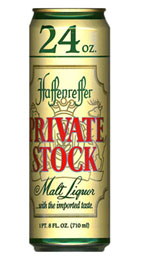 I would like to try brewing Haffenreffer Private Stock malt liquor. Do you have a recipe for this American malt liquor 6.90% ABV? Whole grain or extract would be OK. I can go either way. I have been brewing about ten years and would like to try to make an old favorite from back in the 50s. Not available in Arkansas. Hoping you can help with a workable recipe.
I would like to try brewing Haffenreffer Private Stock malt liquor. Do you have a recipe for this American malt liquor 6.90% ABV? Whole grain or extract would be OK. I can go either way. I have been brewing about ten years and would like to try to make an old favorite from back in the 50s. Not available in Arkansas. Hoping you can help with a workable recipe.
Name: Roger B.
State: Arkansas
—–
Hi Roger,
Thanks so much for your question! This sounds like a fun experiment!
As you probably know, malt liquor is a basically a high-gravity lager brewed with high levels of adjuncts, usually corn, sugar, or a combination of both. Malt liquors tend to be around 6-8% alcohol by volume and are lightly hopped.
While I’ve never had the particular malt liquor you mentioned, I’ve had my fair share of Olde English, so I have a general idea what you’re going for. You may want to do some experimentation to find what works best for you, but here’s what I recommend:
- Crack open a 40 of your favorite malt liquor.
- Get a Brewers Best Cream Ale or American Light recipe kit.
- Supplement the recipe with an extra can of Briess Pilsen Light liquid malt extract plus a combination of flaked corn and corn sugar to bring your estimated original gravity to about 1.070.
- Use a clean fermenting lager yeast, such as Wyeast 2035.
- Lager the beer, fermenting it at cold temperatures to make the beer as smooth as possible.
- Drink a number of 40s over the following weeks so you can reuse them to bottle your own malt liquor.
You could also try an all-grain recipe like this one (for a 5-gallon batch):
Or, you may want to try Charlie Papazian’s recipe for an “Olde English 800”, found in the Complete Joy of Homebrewing:
Olde English 800
5 Gallons
OG: 1.055
FG: 1.004
ABV: 7%
Color: 4.5 SRM
Bittering Units: 14
3.5 lbs. American 2-row pale malt
3.75 lbs. American 6-row malt
3 lbs. flaked corn
2 HBU (56 MBU) American Cluster hops (pellets) – 105 minutes (bittering)
1.5 HBU (43 MBU) American Nugget hops (pellets) – 105 minutes (bittering)
1/4 tsp. Irish moss
Wyeast 2007 Pilsen Lager yeast
Instructions: A step infusion mash is employed to mash the grains. Add 10 quarts (9.5L) of 130-degree F (54.5 C) water to the crushed grain and flaked corn, stir, stabilize and hold the temperature at 122 degrees F (50 C) for 30 minutes. Add 5 quarts (1.9 L) of boiling water. Add heat to bring temperature up to 150 degrees F (65.5 C). Hold for about 60 minutes.
After conversion, raise temperature to 167 degrees F (75 C) water, lauter and sparge with 4 gallons (15 L) of 170 degree F (77 C) water. Collect about 6.5 gallons (25 L) of of runoff, add bittering hops and bring to a full and vigorous boil.
The total boil time will be 105 minutes. When 10 minutes remain, add Irish moss. After total wort boil of 105 minutes (reducing wort volume to just over 5 gallons), turn off the heat, then separate or strain out and sparge hops. Chill the wort to 65 degrees F (18 C) and direct into a sanitized fermenter. Aerate the cooled wort well. Add an active yeast culture and ferment for 4 to 6 days in the primary at 55 degrees F (15 C). Then transfer into a secondary fermenter, chill to 50 degrees F (10 C) to age for two more weeks, then lager for two to four more weeks at 40 degrees F (4.5 C).
When secondary aging is complete, prime with sugar, bottle or keg. Let condition at temperatures above 60 degrees F (15.5 C) until clear and carbonated, then store chilled.
It may take a couple tries to get the flavor just right, but I’m sure you can do it! Good luck and let us know how it turns out!
——————————————————————————————————-
David Ackley is a beer writer, brewer, and self-described “craft beer crusader.” He holds a General Certificate in Brewing from the Institute of Brewing and Distilling and is founder of the Local Beer Blog.
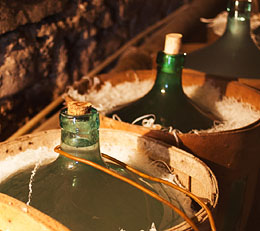 Our wine is still blowing the corks off the carboys. The SG has stopped going down-the wine tastes GREAT-the clarity is great-but, I am a little iffy on going ahead and bottling the wine. Do I need to keep racking our wine to get all the sediment out? What else can we do, to make our wine safe to bottle? These are all really GREAT tasting wines! Some of the wine jugs still have the air-locks in place. Sharyl Name: Sharyl R.
Our wine is still blowing the corks off the carboys. The SG has stopped going down-the wine tastes GREAT-the clarity is great-but, I am a little iffy on going ahead and bottling the wine. Do I need to keep racking our wine to get all the sediment out? What else can we do, to make our wine safe to bottle? These are all really GREAT tasting wines! Some of the wine jugs still have the air-locks in place. Sharyl Name: Sharyl R.
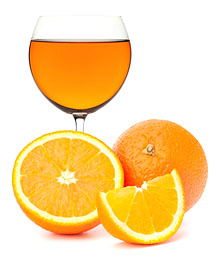 Hi Ed,
Hi Ed, Hello,
Hello, I have an overrun one gallon jug of Merlot on its 2nd racking and its got some white moldy looking stuff on top of the wine between the wine and the stopper . Which is a 1 inch gap. What’s up with that? And should I rack it and see what happens or what?Name: Dennis D.
I have an overrun one gallon jug of Merlot on its 2nd racking and its got some white moldy looking stuff on top of the wine between the wine and the stopper . Which is a 1 inch gap. What’s up with that? And should I rack it and see what happens or what?Name: Dennis D.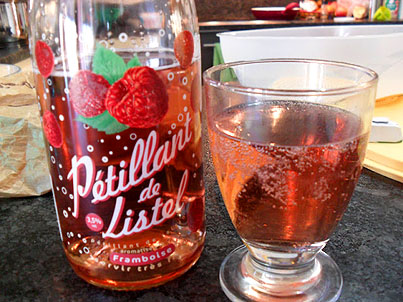 I started bottling a Red Zinfandel which I started in March. It is now June 29. I noticed bubbles in the bottles as I was filling them. I tasted the wine and it felt like it was slightly carbonated. The SG is .998. What might I do to prevent any exploding bottles or should I put the wine back into a carboy and make adjustments. This is the 7th or 8th wine I have made and I have had no problems in the past with either reds or whites.
I started bottling a Red Zinfandel which I started in March. It is now June 29. I noticed bubbles in the bottles as I was filling them. I tasted the wine and it felt like it was slightly carbonated. The SG is .998. What might I do to prevent any exploding bottles or should I put the wine back into a carboy and make adjustments. This is the 7th or 8th wine I have made and I have had no problems in the past with either reds or whites.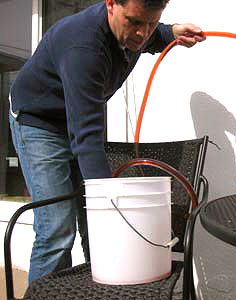 I have been making your wine for many years. Every time i make a wine kit I have that air space in the top of the carboy. I use to add wine I already made to the carboy to top it off but it takes 2 bottles and that kills me. I am very conservative with the racking tilting carboy on one side to minimize loss and only rack once. I like to bulk age but I am concerned about the effects of the air so I bottle as soon as possible. Is there an option that makes sense. can the sediment be run through a filter to retain more wine? Name: Joe G.
I have been making your wine for many years. Every time i make a wine kit I have that air space in the top of the carboy. I use to add wine I already made to the carboy to top it off but it takes 2 bottles and that kills me. I am very conservative with the racking tilting carboy on one side to minimize loss and only rack once. I like to bulk age but I am concerned about the effects of the air so I bottle as soon as possible. Is there an option that makes sense. can the sediment be run through a filter to retain more wine? Name: Joe G.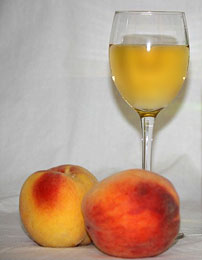 I have a Apple-Peach wine that is six months old. It’s done fermenting, so I used bentonite thinking it would clear so I could bottle. The bentonite didn’t clear at all. It’s not oxidized (I’ve been there and really worked this time to make sure that didn’t happen). I also tried the Kitosol 40 on a six-gallon batch and that didn’t clear either. However, the Kitosol 40 was a batch I bought last year. Can I treat both batches now with the Sparkloid Hot Mix?Name: Becki P.
I have a Apple-Peach wine that is six months old. It’s done fermenting, so I used bentonite thinking it would clear so I could bottle. The bentonite didn’t clear at all. It’s not oxidized (I’ve been there and really worked this time to make sure that didn’t happen). I also tried the Kitosol 40 on a six-gallon batch and that didn’t clear either. However, the Kitosol 40 was a batch I bought last year. Can I treat both batches now with the Sparkloid Hot Mix?Name: Becki P.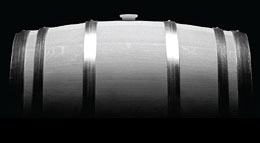 I put a sterilization solution in the barrel of citric acid and sodium bisulfite. I am now ready to put the wine in, but am worried the rinsing won’t be enough to get the chemicals out of the wood. The directions say to rinse, fill with water, wait 24 hrs then empty and fill with your wine.
I put a sterilization solution in the barrel of citric acid and sodium bisulfite. I am now ready to put the wine in, but am worried the rinsing won’t be enough to get the chemicals out of the wood. The directions say to rinse, fill with water, wait 24 hrs then empty and fill with your wine. I would like to try brewing Haffenreffer Private Stock malt liquor. Do you have a recipe for this American malt liquor 6.90% ABV? Whole grain or extract would be OK. I can go either way. I have been brewing about ten years and would like to try to make an old favorite from back in the 50s. Not available in Arkansas. Hoping you can help with a workable recipe.
I would like to try brewing Haffenreffer Private Stock malt liquor. Do you have a recipe for this American malt liquor 6.90% ABV? Whole grain or extract would be OK. I can go either way. I have been brewing about ten years and would like to try to make an old favorite from back in the 50s. Not available in Arkansas. Hoping you can help with a workable recipe.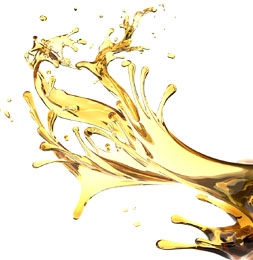 I have made a 5 gallon batch of Elderberry wine. I have racked it three times since it was transferred to the secondary for bulk aging. It needs to be sweetened before bottling. My question is when I add the sugar, sorbate and metabisulfite to the carboy will stirring the wine to incorporate these ingredients expose it to too much air and cause a problem with oxidation after it’s bottled?
I have made a 5 gallon batch of Elderberry wine. I have racked it three times since it was transferred to the secondary for bulk aging. It needs to be sweetened before bottling. My question is when I add the sugar, sorbate and metabisulfite to the carboy will stirring the wine to incorporate these ingredients expose it to too much air and cause a problem with oxidation after it’s bottled?